
Goat body condition and parasite prevention
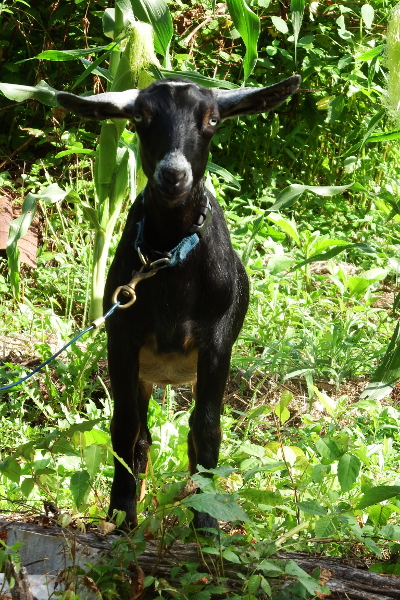 One of our readers commented to ask what the parasite-prevention program looks like for our goats.
I haven't posted about it previously because I'm a bit afraid to be
told that you absolutely can't raise goats without dewormers. So far,
though, that's been our plan. Instead of a regular deworming program,
we:
One of our readers commented to ask what the parasite-prevention program looks like for our goats.
I haven't posted about it previously because I'm a bit afraid to be
told that you absolutely can't raise goats without dewormers. So far,
though, that's been our plan. Instead of a regular deworming program,
we:
- Rotate goats weekly (although the goats do return to used pastures much sooner than the 90 days recommended for total worm eradication).
- Primarily feed goats outside the pasture, through morning
tethering and afternoon rambles, so they're very rarely eating where
they've pooped. (We also work hard not to make them so hungry they have
to eat weeds low to the ground where worms are more likely to hang out.)
- Keep kelp (which they scarf down) and minerals (which they largely ignore) available free-choice at all times.
- Keep a close eye on condition to see if worm loads are getting too high.
- Use garlic as our first line of defense if we begin to see problems.
- Cross the dewormer bridge when we come to it. (We've never reached this stage yet, and I'd probably head for copper first.)
What do I mean by keeping
a close eye on condition? Parasites get first dibs on your goat's feed,
so an animal with too many worms will be skinny even though she's
getting plenty to eat. I was intially testing for fat deposits using a weight tape...but
then one of our spoiled darlings knocked the ribbon down from its high
shelf and chewed it apart. So I've moved on to body-condition scoring,
which requires no supplies except your fingers and a goat. As long as
our voracious beasts don't eat my fingers, I'm all set.
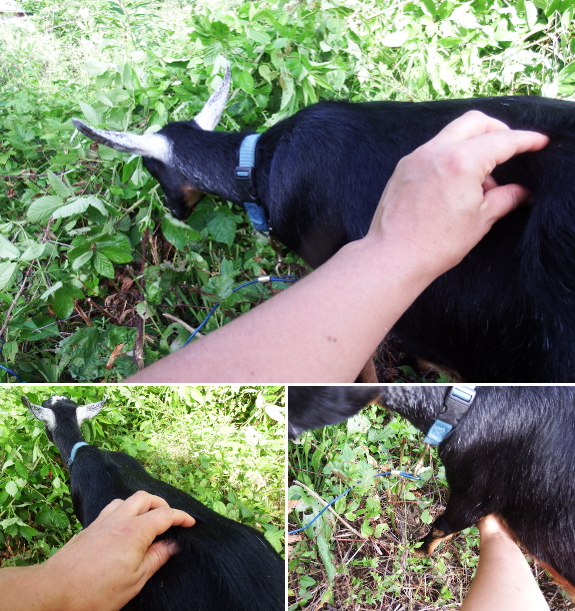
This factsheet
walks you through scoring your goat's body condition, so I won't repeat
the same information here. To cut a long story short, you're really
looking for fat in two locations --- under the goat between her front
legs (the sternal fat, which is what a weight tape really measures) and
in the area between the spine and the jutty-out bit (aka the transverse
process) above the hind legs (the lumbar fat).
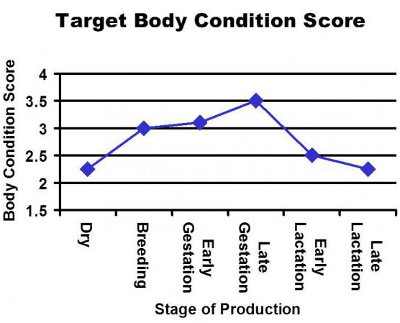 The image to the right is a quick cheat sheet on body-condition goals for milk goats, stolen from this page.
The graph was made for dairy sheep, but is similar to the goals for
milk goats. As you can see, it's best to have a goat bred at a
body-condition score of around 3, then she naturally drops some fat as
she makes milk. However, if you can't keep your milk goat above a
body-condition score of 2, then it's time to dry her off and feed her up
for next time.
The image to the right is a quick cheat sheet on body-condition goals for milk goats, stolen from this page.
The graph was made for dairy sheep, but is similar to the goals for
milk goats. As you can see, it's best to have a goat bred at a
body-condition score of around 3, then she naturally drops some fat as
she makes milk. However, if you can't keep your milk goat above a
body-condition score of 2, then it's time to dry her off and feed her up
for next time.
So where do our goats
stand? Artemesia's body-condition score is a good estimate of her
parasite loads since she's not doing anything difficult (like milking)
and is barely getting any supplemental feed. My estimate is that she's a
solid 3, which is just about perfect. (Much higher and she'd count as a
fat goat.)
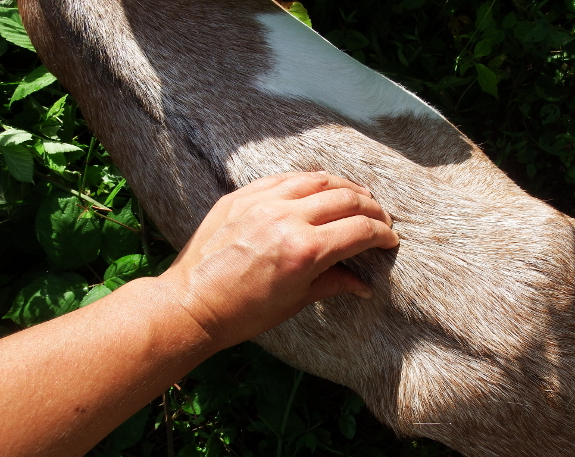
Abigail is a bit thinner,
with the fat deposit between the peak of her spine and the transverse
process being very slightly concave rather than in a straight line. Even
though it's not technically part of the body-condition score, I think
it's also relevant data that Abigail's hair doesn't shine in the sun
quite the way Artemesia's does. As a result, I'd estimate that our older
doe's body-condition score is 2.5 --- not too bad for four months into
her lactation cycle. I probably should increase her carrot rations,
though, since I'd let them dwindle recently in favor of feeding mostly
alfalfa pellets in her daily rations.
I should mention that
inside-the-eyelid color is another way of keeping track of a goat's
parasite load, but I haven't crossed that bridge yet. It just seems
easier to feel up our goats externally than to flip their eyelid out to
look inside. However, I feel pretty good about worms at the moment,
given how sleek and healthy our goats appear.
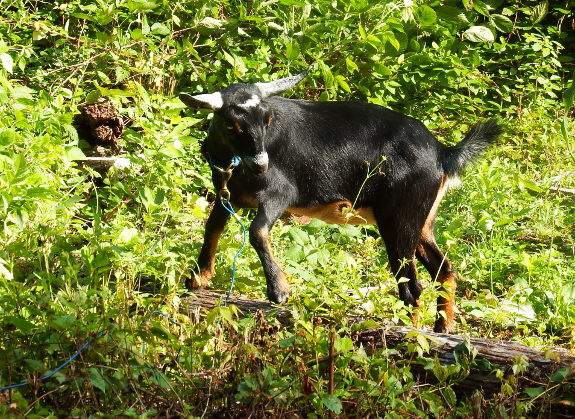
And that's the
far-too-long answer about our parasite-prevention program. Here's a cute
picture of Artemesia to wake you back up in case your eyes glazed
over....
Want more in-depth information? Browse through our books.
Or explore more posts by date or by subject.
About us: Anna Hess and Mark Hamilton spent over a decade living self-sufficiently in the mountains of Virginia before moving north to start over from scratch in the foothills of Ohio. They've experimented with permaculture, no-till gardening, trailersteading, home-based microbusinesses and much more, writing about their adventures in both blogs and books.
Want to be notified when new comments are posted on this page? Click on the RSS button after you add a comment to subscribe to the comment feed, or simply check the box beside "email replies to me" while writing your comment.

Thats the way to go. Wormers are basically useless, everything out there is resistant To them. There are plenty of plants that will keep parasites down; oak, blackberry, Brazilian pepper, and so on. So everyone save your money and just feed your goats a Good varied diet. And keep them on good ground.